[Sept 2020 Update: The CPSC advises consumers to stop using and dispose of the Morpher helmet due to risk of head injury. You can check out other folding helmets on our website.]
Disclosure: Things That Fold earns commission from links on our site.
 (4 / 5)
(4 / 5)
- Not Worth It
- Meh
- Good
- Highly Recommended
- Life Changing
Finally someone has made a folding helmet! There have been a few on the market before that have collapsed a bit, but this is the first one that truly folds almost flat. It is lightweight and could easily fit in a purse or small bag which makes it perfect for bike commuters.
The Morpher has generally received good reviews. It has received numerous awards for innovation, and is certified CPSC for the US as well as CE for most other countries. Although a few purchasers commented that the quality control could be better, I personally love my helmet and have no issues with its level of comfort. The helmet is manufactured by Strategic Sports, the world’s leading OEM helmet manufacturer.
About the Morpher
The project started on Indiegogo in late 2013 and shipped its first helmet in 2015, so it is still fairly new to market. It has since added some new colors, and the company is planning on adding a line of helmets for larger heads (currently it is only rated for 52-58cm, or about 20-23″, which is a bit snug if you have a very large head).
The Morpher can be bought on Amazon or the Morpher website.
The Morpher comes in Matte Black, Shiny Black, Grey, White, Silver, Red, Yellow, and Spotted

Matte Black 
Shiny Black 
Grey 
White 
Silver 
Red 
Yellow 
Spotted
Opening and closing the helmet definitely takes some practice, but after a few tries I was able to get it down to about five seconds. It uses a magnet instead of a regular clip to snap together the straps under your chin. Some people love this, but I personally like it no better than a regular clip.
The main reason I love this helmet so much (aside from the fact that it folds) is that it doesn’t look goofy like a lot of other helmets do. Most helmets are either shaped like a round bowl, or like a super-aerodynamic football. The Morpher is one of the few helmets I could find that lies somewhere in between, so it doesn’t look too dorky or like it’s trying too hard to be sleek. It’s an average and inconspicuous look, which is exactly what I was going for.
The helmet also comes with a special bag for easy transportation
| Pros | Cons |
| -Innovative design -Reasonably stylish -Folds down to 2.5″ | -Hard to fold |
Opening or closing the helmet takes about five seconds
Dimensions – Open vs Folded

Morpher, Open 
Morpher, Folded
| Open | Folded |
| 11″ l x 8.25″ w x 4.5″ h | 14″ l x 2.5″ w x 6″ h |
Folding Time and Complexity
| Time needed to open/ fold | 5-10 seconds |
| Attention needed to fold | Somewhat complex, needs some focus |
| Time/ Tries to master | Around 20 tries (5 minutes) |
How It Folds
The folding mechanism on the Morpher uses special side panels on both the left and right side of the helmet that hook onto the adjacent panels. These hooks can be released by pulling on a latch positioned in the center of each of these two side panels. To fold the Morpher, you have to do three motions:
- Pull the latches on each side of the helmet to unlock the left and right side panels
- Unhook each of the side panels from the adjacent panels, by pulling the side panels outwards, while holding the rest of the helmet steady
- Once both of the side panels are detached from the sides of the helmet, squeeze the helmet shut so it folds in on itself
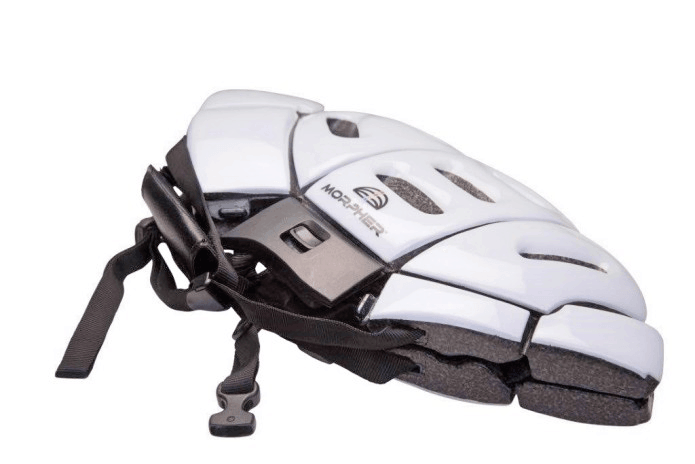
It definitely takes some practice folding the helmet the first few times, as the steps are not super intuitive. The hard part is that the hooks do not easily detach from the rest of the helmet, so it takes a bit of force. Also, when unhooking the side panels, you have to apply the force in just the right direction: While pulling a side panels outwards, you have to simultaneously shift the side panel towards either the front or back of the helmet, while shifting the rest of the helmet in the exact opposite direction. Although it sounds difficult, I was able to get it down to about five seconds with a bit of practice (maybe 20 tries or so).
To open the helmet, you basically do the steps in reverse:
- Open the helmet wide. This will allow the hooks on both sides of each side panel to make contact with the sides of the helmet.
- Insert the hooks manually into position. This is the exact opposite motion as when you try to unhook them: Pull the adjacent panel towards the hook, and snag the hook onto the side of the helmet (this takes some force). Repeat for both sides. There are two hooks on each side panel, or four hooks in total.
Since inserting the hooks requires more dexterity than pulling them out, opening the helmet takes slightly longer than folding it. However, this is still a fairly quick task, and should take less than 10 seconds, with practice.
Overall, the opening and folding process is somewhat annoying, but not as bad as it sounds. I do tend to store the helmet in its open position to save myself the hassle when running to work in the morning. However, if I had to open it every morning it would not be so bad either.
Morpher Physical Description
Aside from its foldability, the only other unique feature about the Morpher is the chin strap. The Morpher uses a magnetic buckle that has one half of the buckle slide sideways into place inside the other half. This took me a long time to figure out, as the buckle has to be oriented exactly the right way in order to slide into place. There is a socket on one half of the buckle and a protrusion on the other, so the two have to be lined up exactly correctly before attempting to slide the protrusion into the socket. Once it’s in place, the buckle holds tightly and there’s no chance of it coming loose by accident.
Unfastening the buckle also takes some skill, as you have to slide the buckle halves sideways apart from each other. My initial instinct was to try and just yank the buckle halves apart, which does not work. However, like the folding mechanism, this gets a lot easier with practice. It’s possible that with enough practice the magnetic buckle will actually be easier to open than a traditional buckle, since it only really requires one motion: A lateral slide, rather than having to pinch the buckle before pulling it apart.
Like most other helmets, the chin strap’s length adjusts using a sliding clip. The chin strap material is of good quality, is comparatively soft, and does not irritate the skin. The Morpher has an ordinary plastic ratchet to keep the helmet snug over the head. The ratchet can be made longer or shorter to adjust to the head size.
The Morpher has ordinary padding on the inside of the helmet. The pads are made of decent quality material, are thin and soft, and attach to the inside of the helmet with Velcro, and can be removed.
The helmet itself is made of 16 firm EPS foam segments, which are attached to each other with connecting pieces made of a hard plastic. The helmet segments are encased by a polycarbonate shell. Overall, the Morpher’s size and weight feel typical for a bike helmet.
Safety
The Morpher is safety certified under CE/ EN 1078 for Europe, and CPSC for the US and Canada. Like most of the folding helmets we review, the Morpher is not safety certified for Australia or New Zealand.
On July 1, 2019, Consumer Reports cautioned against purchasing the Morpher due to safety. The safety issue they reported was that in their independent tests, they found that while the Morpher passed the impact test on the front, rear, and crown, it failed the side impact test. This means that should a Morpher helmet receive an impact from the side, its protection would not be sufficient to shield the helmet wearer from the impact.
You can read the response from Morpher on the Consumer Reports website. On Morpher’s website you can also find a summary of its safety testing, as well as its safety certification for the CPSC (US/Canada), and CE (for Europe).
Does the Consumer Reports Finding Indicate a Problem in the Morpher’s Design?
According to Bicycle Retailer And Industry News, which interviewed both Consumer Reports and Morpher about the issue, Consumer Reports’ finding does not necessarily mean the Morpher is unsafe. It quotes the director of the non-profit Bicycle Helmet Safety Institute as saying that the helmets are probably OK, but that the failures might mean the Morpher was close to the limits of the certification tests that they passed.
Maybe the Morpher Is Too Close to the Limit
To check whether that’s the case with the Morpher, we looked at their CPSC safety testing results. The standard “impact” test is to drop the helmet containing a dummy headform from 2 meters onto a flat anvil, and measure the impact in terms of G’s. That’s the way Consumer Reports performed the test, which is basically consistent with the CPSC’s impact test.
The ideal is for the impact of this test to measure less than 200 g. For a sense of what the level of G’s means, the Bicycle Helmet Safety Institute says “At 400 g’s you can expect permanent injury. At 300 g’s you can expect to lose consciousness, and probably suffer some injury”. The CPSC’s cutoff for passing the flat anvil test at 2m is 300 g– that’s the test that Consumer Reports failed the Morpher for.
How Did the Morpher Do on the Official Impact Test?
According to its CPSC safety testing results, the accelerometer inside the headform measured 240.6 g.

That’s definitely above the Bicycle Helmet Safety Institute’s ideal of 200 g, but still within the 300 g limit.
So it should have been OK on the Consumer Reports test.
Then Why Did the Morpher Fail Consumer Reports’ Impact Test?
I am inclined to believe what that director of the Bicycle Helmet Safety Institute stated in his interview with Bicycle Retailer And Industry News: “Consumer Reports’ lab is not certified and they may do things a little differently so these helmets might have been just close enough to the margin to fail.”
You can also see that the test that the Morpher did relatively poorly on was exactly the one that Consumer Reports failed it for– the side impact.
It does seem like maybe the Morpher was just too close to the limit.
Bottom Line: Is It Safe?
Consumer Reports said that their testing is not meant to replace the CPSC’s minimum requirement. Nor is Consumer Reports certified to conduct tests for the CPSC’s standard.
However, the test does highlight that while the Morpher is safety certified by the CPSC, it may have room for improvement.
Whether this is enough to steer you towards a different folding helmet is up to you. However, whether you choose to use another helmet or continue to use the Morpher, you are still far safer wearing any helmet at all than you are without one.
Reviews
The Morpher has generally received good reviews. However, it seems like one of the main reasons people love the helmet is that they’re comparing it to non-folding helmets. It’s true that its folding design is innovative– it preceded many of the new folding helmets that are now coming to the market. And it folds flatter than most other folding helmets, while otherwise looking like an ordinary bike helmet. However, if you’re comparing it to other foldable helmets, would the reviews still be as positive? Based on the reviews I have read online and my own research, I think the Morpher would still be considered a good purchase even compared to other foldable helmets (see more on this below).
The only downsides I have found in the reviews are that the quality of the plastic components (namely the latches/hooks, and a few other plastic parts) seems questionable. A few people expressed doubts over how long these parts would last, and some complained about quality control issues leading to jabbing of these plastic parts against their head. I haven’t had any issues with this personally, so it remains to be seen how reflective these complaints are. Morpher has a one-year manufacturer’s warranty, and a 30 day return policy (if it’s unused and in original packaging), so if you notice any issues with the plastic components you should return or exchange it right away.
The other downside mentioned, which I would corroborate with my own experience, is that the helmet can be a bit tight if you have a larger head. Morpher is planning on releasing a larger sized version of the helmet, so presumably this problem will have an easy solution.
Based on online reviews, I think the odds of being happy with your Morpher are fairly high. If you do buy it and are not happy with it, I would love it if you could let me know, so I can update this review. You can comment below, or email me using the contact page above.
Price
The Morpher costs about $150 on Morpher’s website. If you’re used to buying helmets in the $10 to $20 range, then this can certainly feel like a high price. As I’m not sure you can call this a “high end” helmet (whose prices can easily be in the $150 to $300 range, but which are often made from specialized protective materials), I’d say this could be best classified as an expensive mid-range helmet. Its price is mostly in-line with other mid-range foldable helmets (mostly in the $50 to $200 range), but as the design is different from other foldable helmets, it is tricky to do a proper comparison.
Comparison to Other Foldable Helmets
The Morpher helmet is overall a great folding helmet, and has many of the most important features in a folding helmet: compactness, style, and comfort. However, as there are many new folding helmets emerging on the market, here is a comparison of how the Morpher compares on some key features. Note that while I genuinely believe the Morpher is one of the top folding helmets on the market, I have noticed some shortcomings, which may matter for some people. In particular, the one-size-fits-all (20.5″ to 23″ head circumference) is fine for most people, but other helmets may be more appropriate if your head circumference is outside that range. Also, while the $150 price tag is reasonable, I wish it could be cheaper.
Morpher vs Other Folding Helmets
Here is a list of the other foldable helmets that are on the market, which in some cases may be reasonable alternatives to the Morpher.
If you just want a high level overview, you can skim this short comparison of all of the best folding helmets here.
Accordion-Style Lower End Folding Helmets
The accordion style foldable helmets include the Ftiier Folding Helmet and Cairbull Fender. These are definitely more lower-end than the Morpher, and I’m not sure I would trust the quality. I’m lumping the Ftiier and Cairbull helmets together because they are priced identically and are constructed similarly. The helmet seems to be more of a series of front-to-back struts than a protective shell for your head, not to mention that they make the helmet look a bit odd. Also, the helmet only collapses down to about 4″, which is still fairly wide. The silver lining is that they are fairly light– 0.55 lb– much lighter than the Morpher, and allow a ton of ventilation. Also, obviously, they are a lot cheaper. If the Morpher is way out of your price range and you don’t care so much about compactness or quality, these lower-end helmets might make sense.
FEND
FEND ($100): The Fend helmet looks like it follows the same basic design as the accordion-style foldable helmets, but the quality seems slightly better. It still only folds to about 4.3″, not a huge space saving compared to the Morpher (or even some of the other folding helmets). But it does seem airier, accommodates two different sizes (S and M/L), has an internal fit adjuster, and is somewhat cheaper. This could be a reasonable alternative to the Morpher if you’re looking for an airier folding helmet, or want more precision with the helmet sizing, and don’t care as much about compact foldability.
To learn more, see the detailed review of the FEND folding helmet here.
BioLogic Pango
BioLogic Pango ($60): Before other folding helmets came out, this may have been a decent option, but in terms of foldability, weight, comfort, and style, it seems like there are enough comparably-priced options on the market that if you were looking for an alternative to the Morpher this probably wouldn’t be it. The helmet weighs 1.1 lb, which is heavier than the Morpher, and only collapses a little bit (its width when folded is 5.1 inches). The Pango has a large rounded vent area covering the top which, while being amazing for ventilation, looks a bit strange. It also seems to sit high on the head and does not seem to accommodate a larger or smaller head (aside from internal pads that can be swapped out for a different thickness). It does have a magnetic buckle, like the Morpher. Overall, I can’t imagine someone preferring this to the Morpher, unless price is a major consideration and for some reason the other lower-priced folding helmets wouldn’t work.
To learn more, see the detailed review of the BioLogic Pango here.
LID Plico
LID Plico (approximately $60): Launched on Indiegogo in late 2017, first shipped in late 2018. It’s 0.9 lb (comparable to Morpher’s 0.95 lb), and compresses from a width of 6.25″ down to 3.5″, still a bit wider than Morpher’s 2.5″ folded width. It seems like it might not be as well ventilated as the Morpher, due to its solid external panes. Also, since the shell is not as flexible as the Morpher, it looks like its inside might not have as much “give” as the Morpher does, so I’m not sure how well it would fit on bigger or smaller heads (above 23″ or below 21″). Stylistically, it stands out a bit more than the Morpher does. On the plus side, it does come with a detachable rear light for added visibility. The LID Plico is certainly much cheaper than the Morpher, so that could make it a viable alternative.
To learn more, see the detailed review of the LID Plico here.
174HUDSON Stack
Priority Bicycles’ 174HUDSON Stack packable helmet (also available on Amazon and Costco): This partnership between Priority Bicycles and Closca (the same company that made the Fuga) resulted in an inexpensive yet high quality folding helmet. It’s super lightweight at less than 0.75 lb, and compresses down to 3.5″ or 3.8″ (depending on whether you get the M or L), which makes it highly portable. While the Stack does not collapse as small as the Morpher, it generally wins out in terms of convenience. It’s lighter, more grippable when folded, and much simpler to open and fold compared to the Morpher. In my experience, it was also more comfortable. As the Stack is also half the price of the Morpher, many riders may prefer this folding helmet over the Morpher.
To learn more, see the detailed review of the 174HUDSON Stack folding helmet here. You can also read our interview with Priority Bicycles, the company behind the 174HUDSON Stack.
Brooks England Carrera
Brooks England Carrera: The Carrera is about 20% lighter than the Morpher, but only collapses a little bit to save some space. It comes in two adult sizes (S/M and M/L) and is somewhat flexible, so should fit most head sizes. It seems quite well-ventilated, due to the four wide gaps extending from the front of the helmet to the back. If foldability is not a major concern (its width only reduces by about 25% when collapsed, much less than the Morpher), and style/comfort is more important, than the Carrera can be a reasonable alternative to the Morpher, at a lower cost.
To learn more, see the detailed review of the Brooks England Carrera folding helmet here.
Overade Plixi
Overade Plixi (available on Amazon): This one definitely looks bigger and more solid than the Morpher. It’s made of a harder material, and opens/folds like a Transformer, with multiple steps that involve sliding parts around. When it’s collapsed, it takes on more of a spherical form than a flat one, so it may be harder to fit in a briefcase or handbag. The style is also more rounded, like a skater’s helmet, which may be good or bad depending on your preferences. It also comes in either Small/Medium, or Large, so may be a better option for people with an above or below average head circumference. The Overade Plixi is about 1 lb (Small/Medium) or 1.1 lb (Large), so is a bit heavier than the Morpher. Overall, this may be a good alternative for people who prefer a more rounded style, have a head above 23″ or below 20.5″ circumference, or who are looking for a slightly less expensive helmet than the Morpher.
To learn more, see the detailed review of the Overade Plixi folding helmet here.
Closca Fuga
Closca Fuga: The Closca Fuga folds down to 2.5″, about the same as the Morpher, but is slightly more rounded than oval-shaped like the Morpher. The Closca Fuga definitely makes more of a statement than the Morpher; its design reminds me a bit of NYC’s Guggenheim Museum, consisting of concentric rings stacked on top of one another. It contains an NFC chip that can link to your smartphone, allowing you to do things like take out a NYC CitiBike without your key, or quickly send location data to your emergency contact. It also comes in three sizes, so can fit a wider range of head sizes. The Closca Fuga weighs significantly less than the Morpher, 0.55 lb (Small) to 0.65 lb (Large), rather than the Morpher’s 0.95 lb. Being roughly the same price as the Morpher, the Closca Fuga would be a reasonable alternative if you prefer a lighter helmet, or happen to love the look.
To learn more, see the detailed review of the Closca Fuga folding helmet here.
Park & Diamond
Park & Diamond (likely around $150): Launched on Indiegogo in 2018, shipping in 2019). It’s 0.5 lb (about half the weight of the Morpher), collapses down to the size of a water bottle (smaller than the Morpher), and looks like an ordinary baseball cap. Despite being much smaller and lighter than a traditional helmet, the inventors claim that it will comply with all of the same safety standards as other helmets including US CPSC. It will be available in three adult sizes (Small, Medium, and Large), which is helpful since the Morpher and most other helmets are designed primarily for medium-sized heads. The helmet is also coated in a breathable and washable fabric. This helmet will definitely be a competitive alternative to the Morpher, especially if you prefer a helmet that does not look like you’re wearing a helmet.
Hedkayse One
Hedkayse (around $200): Launched on Indiegogo in 2015, started shipping in 2019. It’s about 1 lb (comparable to the Morpher), and designed for 19.3″ to 24.4″ heads (wider range than the Morpher and most other helmets) thanks to a strap design that pulls the panels together to the desired size. The Hedkayse doesn’t seem to fold as tightly as the Morpher, however. The inventors seem to have put a lot of emphasis on the Hedkayse’s long-term durability and ability to withstand many repeated impacts, for example by using flexible/ shock absorbent material, which may be appealing for people who find themselves getting into lots of minor accidents, or who just want a “softer” feel to their helmet. It is also hand washable. The design does look much more like a traditional helmet than the Morpher. In all, although the Hedkayse seems like it will be more expensive and is larger than the Morpher, it may be a good alternative for people whose head measures below 20.5″ or above 23″, prefer a more traditional design, want a helmet that can be hand washed easily, or like the inside of their helmet to feel more cushiony.
Paper Foldable Helmets
Paper foldable helmets (approximately $5): These definitely stand out, as they’re made of paper/cardboard material, and are coated in wax for waterproofing. They are also recycleable and meant primarily for bikesharing programs. In this market are Weshine and EcoHelmet, both fairly new (around 2017), although I wouldn’t say they are exactly comparable to the Morpher due to their conspicuous look and disposable nature.
Comparing Features
Price
The Morpher’s price is in line with some of the nicer folding helmet models: Closca Fuga, Hedkayse (around $200), and Park & Diamond (likely around $150). There are less expensive folding helmets that are still high quality, such as the FEND ($100), Carrera, Overade Plixi, LID Plico, and 174HUDSON Stack. but none of them fold as tightly as the Morpher.
Size/Fit
The Morpher comes in one-size-fits-all, for a head with a circumference in the range of 20.5″-23″. Most of the other high-quality folding helmets either come in multiple sizes or otherwise fit a wider range of head circumferences. Although the Morpher does have some flexibility due to its pliable material, it can feel a bit tight on my head, which is slightly wider than average. Thankfully, its noticeability is usually gone after a few minutes. The tightness also causes the helmet to rest a tiny bit higher on my head than it otherwise would, which only detracts a bit from its aesthetic appeal. The Morpher is overall neither super comfortable nor particularly uncomfortable. Some of the other high end folding helmets (such as the Park & Diamond and Hedkayse) seem like they may be more comfortable.
Weight
Weight is definitely an important factor, since the main advantage of a foldable helmet is that you can carry it around easily, which is hard to do if it’s heavy. Also, a heavy helmet can feel uncomfortable, slide around, distract you, and make it harder to scan for cars and pedestrians. Most of the folding helmets weigh around the same as the Morpher (including the LID Plico, Overade Plixi, and Hedkayse). A few of them weigh significantly less: Brooks England’s Carrera (20% less), 174HUDSON Stack (25% less), Closca’s Fuga (35% less), and Park & Diamond’s foldable helmet (50% less). I’ll leave out the Cairbull and the paper foldable helmets, since I consider these to be in a different class. The Morpher is fairly average in weight, with the exceptions above.
Compactness/Foldability
The Morpher does well in terms of foldability. It collapses down to about 2.5″, which is comparable to the Closca Fuga (also 2.5″ in width when collapsed), but still larger than the Park & Diamond helmet (which folds down to water bottle size). The Overade Plixi also folds down fairly compact, but due to its more spherical shape when collapsed, it’s harder to take advantage of the saved volume. Most of the other helmets fold down to about 3.5″ – 4.5″, which is significantly wider than the Morpher.
Ease of Folding
Folding the Morpher is average or slightly worse than average in terms of difficulty. With a few minutes of practice, you should be able to fold it in about five to ten seconds. However, some folding helmets just smush down into the folding position, such as the Cairbull, Ftiier, FEND, Carrera, 174HUDSON Stack, and Closca Fuga, which is definitely easier than dealing with the latches and hooks on the Morpher. The Morpher is not alone in requiring a bit of maneuvering; both the Overade Plixi and BioLogic Pango also require sliding some parts to get them to fold.
Style
I’ll admit, this is fairly subjective. I liked the Morpher because it’s hard to tell that it’s a foldable helmet. At a glance, it looks like an ordinary biking helmet. I also liked that it has such a standard look; it does not really make any statement. Some of the other folding helmets are also very unremarkable-looking; this is definitely true of the Hedkayse, but also arguably the FEND, Carrera, and Overade Plixi, which still look pretty traditional. The Park & Diamond is unique in that it does not look like you’re wearing a helmet at all, taking inconspicuousness to the extreme. On the other end of the spectrum is the Closca Fuga, which has made a deliberate attempt to stand out for its stylishness. The folding helmets that, in my opinion, are definitively less discrete and less stylish than the Morpher are the BioLogic Pango, the lower-end helmets (Ftiier Folding Helmet and Cairbull Fender), and potentially the LID Plico.
Ventilation
I think the Morpher does a really good job here as well. It’s not that the Morpher is the best-ventilated folding helmet (the Carrera and FEND seem better ventilated due to the wide grooves across the length of the helmet), but rather it strikes a good balance between ventilation and warmth. If you use this helmet in the winter as well as the summer, you will appreciate that the helmet lets in enough air to cool you in the summer, but still traps some heat in during the winter.
Quality control
For the most part, the quality of the Morpher seems pretty good. The manufacturer is reputable with an abundance of experience in making helmets. However, reading other people’s reviews online, there did seem to be some complaints about defects (comfort-related, presumably not impacting safety). I haven’t noticed anything bad so far in my helmet.
Conclusion (tl;dr)
The Morpher folding helmet folds extremely flat, while otherwise looking like a regular helmet. It’s great if you’re new to folding helmets and want something inconspicuous and functional. Other helmets may be better in terms of fit, style, portability, or price, but overall the Morpher does not have any major weaknesses, and is a great helmet that you will probably be very satisfied with.
This review was written by the Things That Fold editorial team. We purchased this product online and have been personally using it for at least one month prior to writing this review. Our review is based in part on our experiences, as well as additional research we did online.
Our website uses affiliate links, meaning that if you click on a hyperlink, we may receive a commission for referring you to the seller’s website. As Amazon Associates, we earn from qualifying purchases. Any prices and availability shown are based on time of publication and may subsequently change.
Product images on this page are taken from the product’s official website or from the product page of an official sales channel.
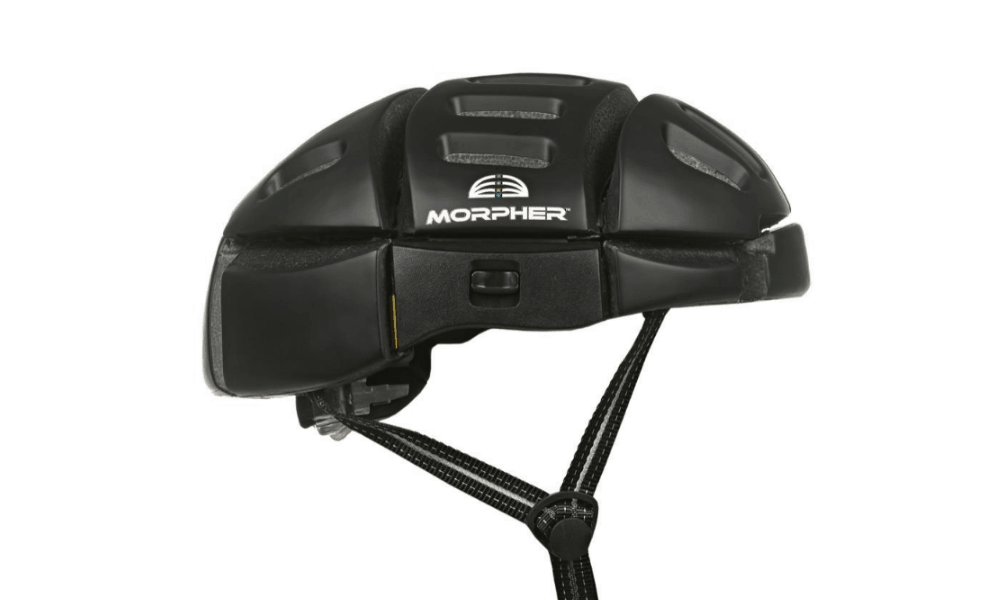
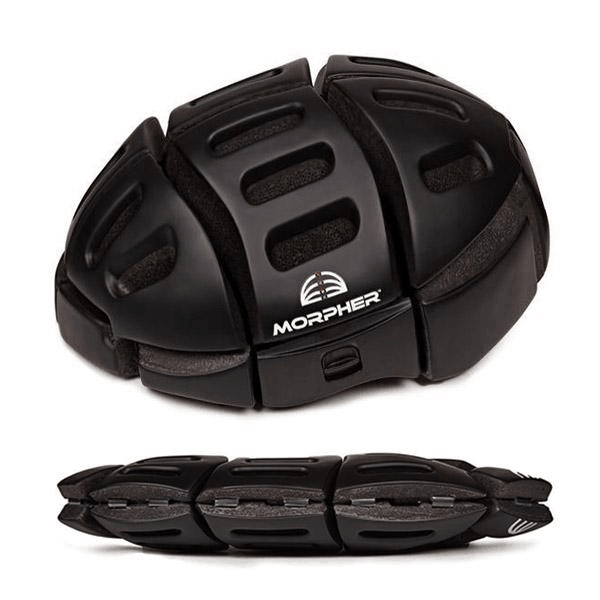
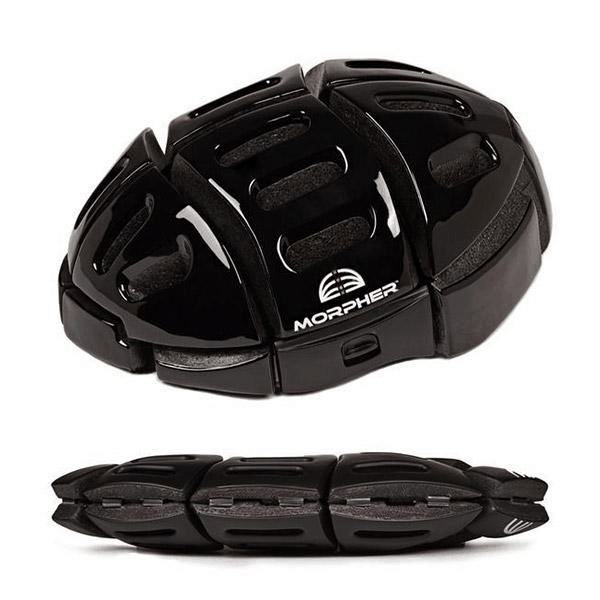
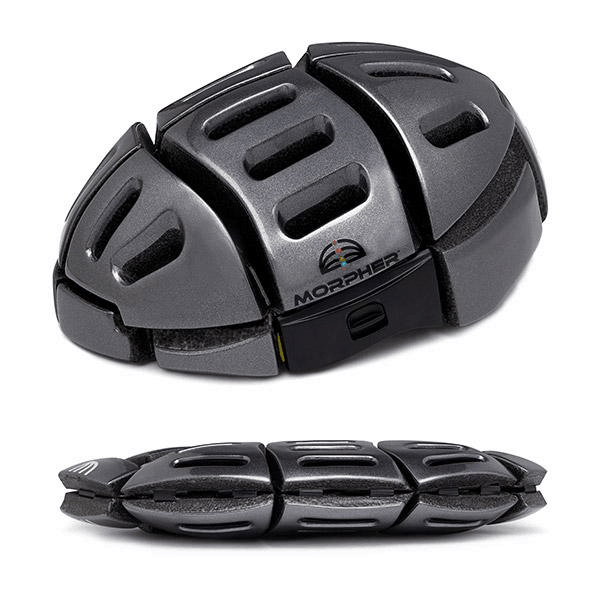
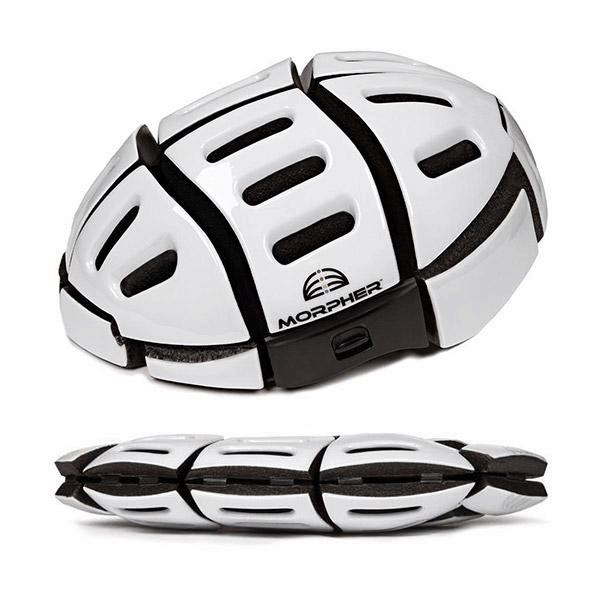
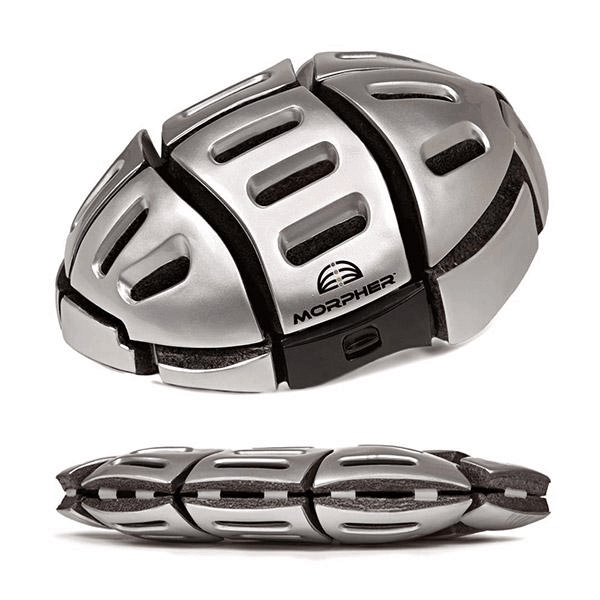
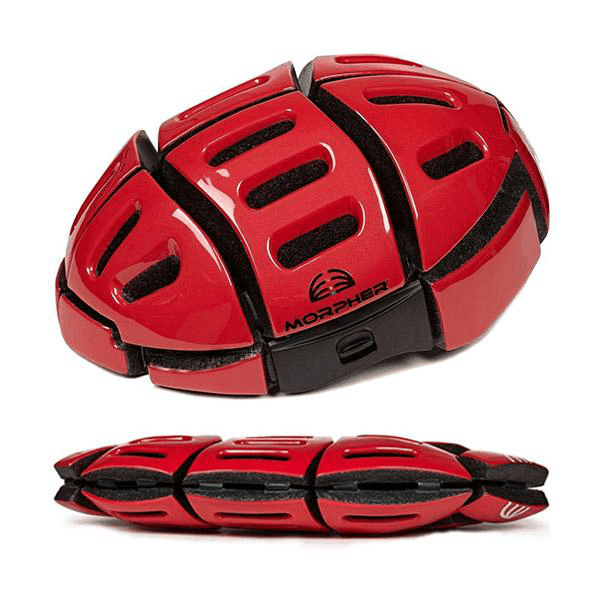
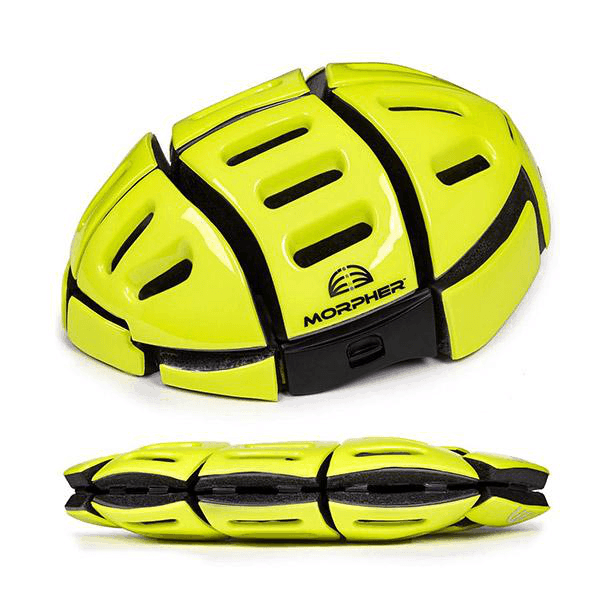
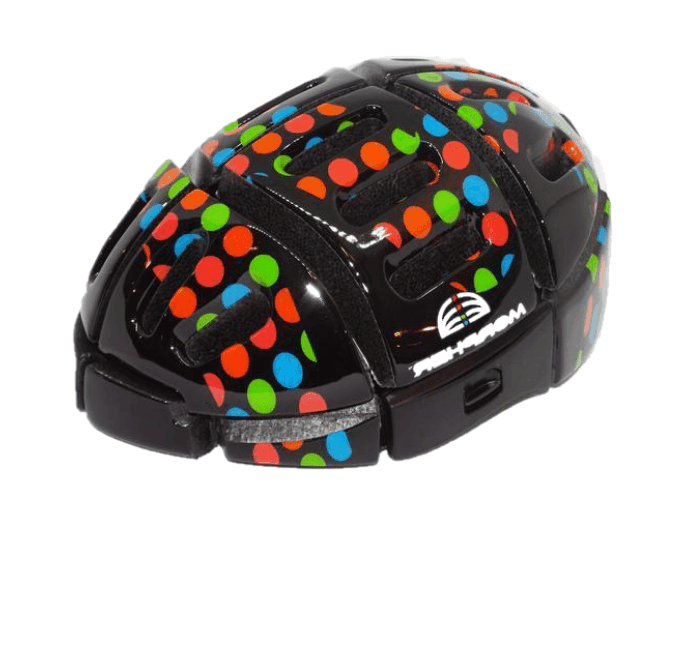
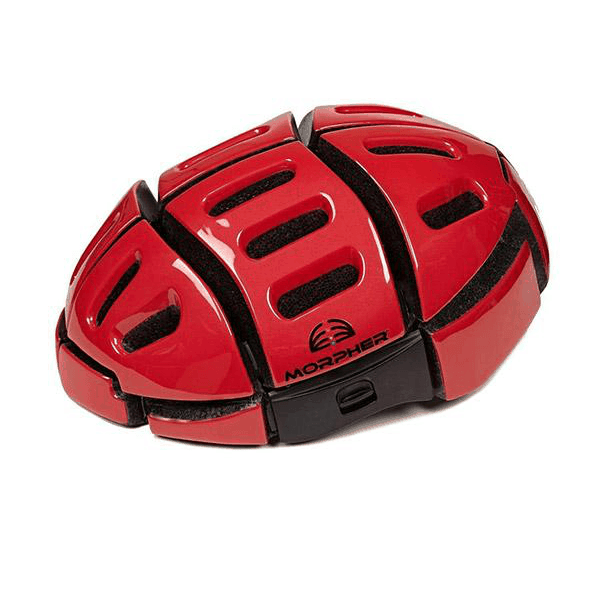
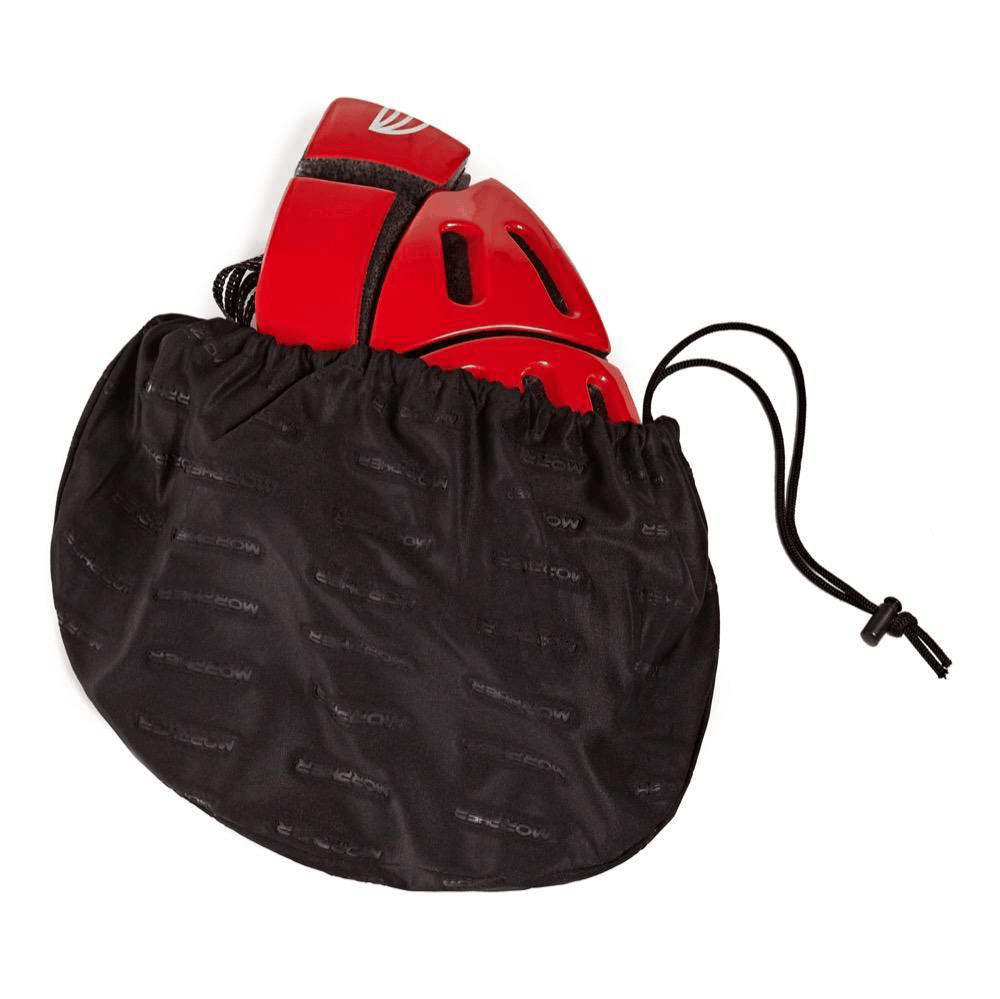
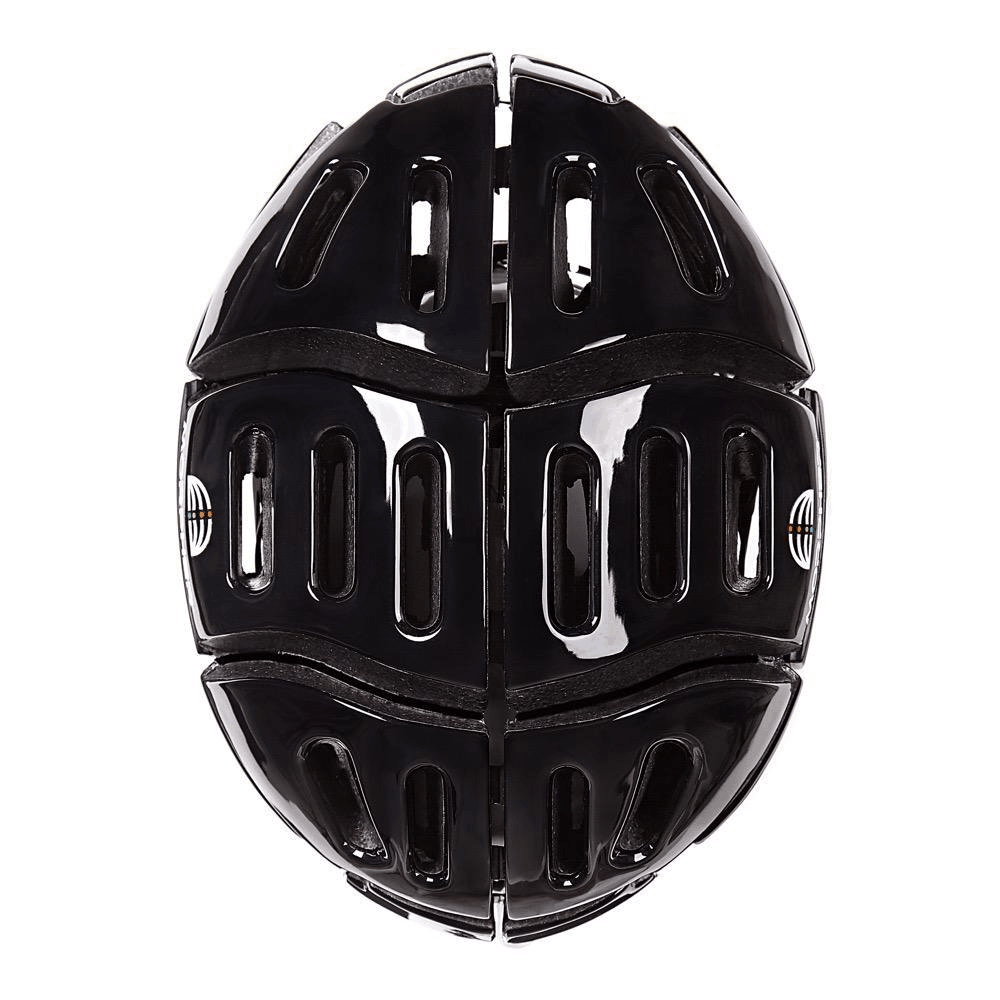
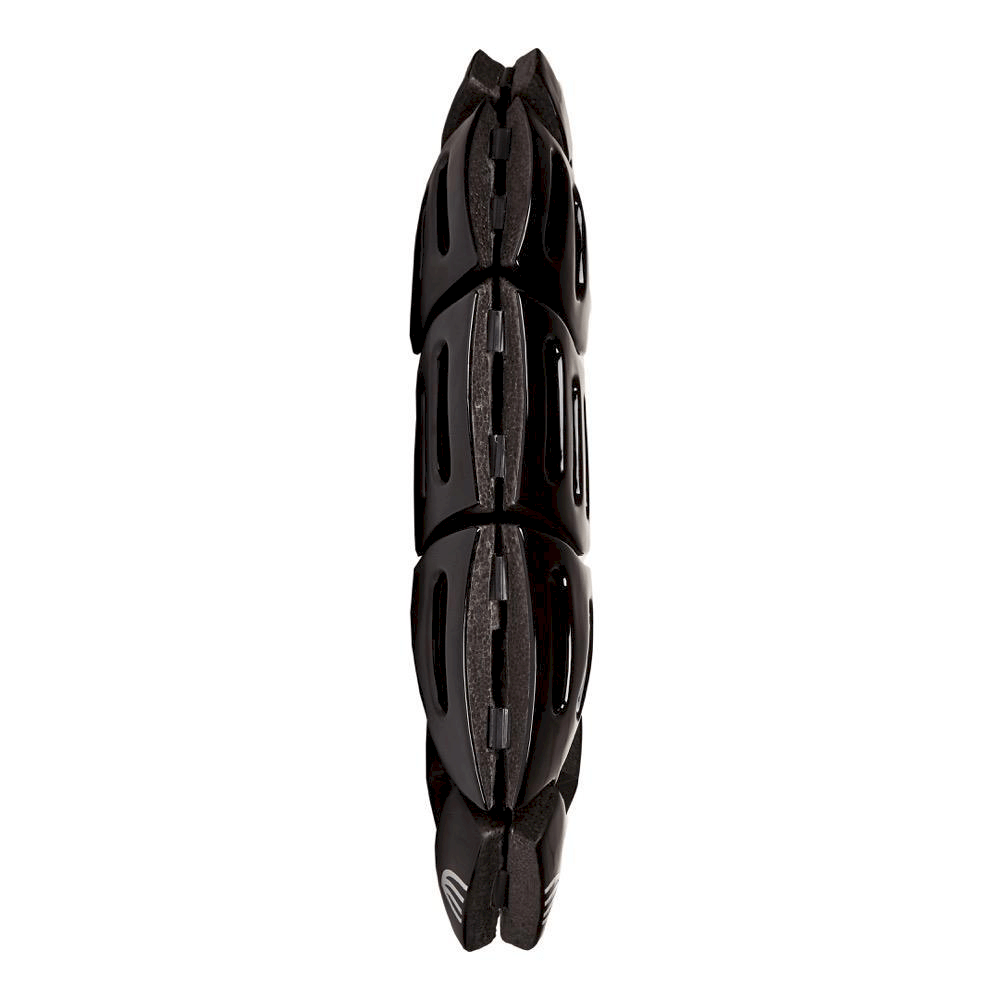



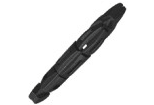

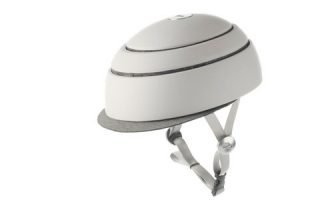
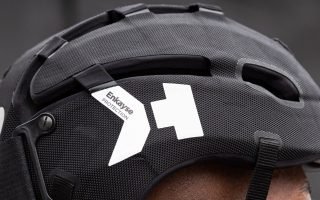
This would go great with the folding bike! great review! Thanks!